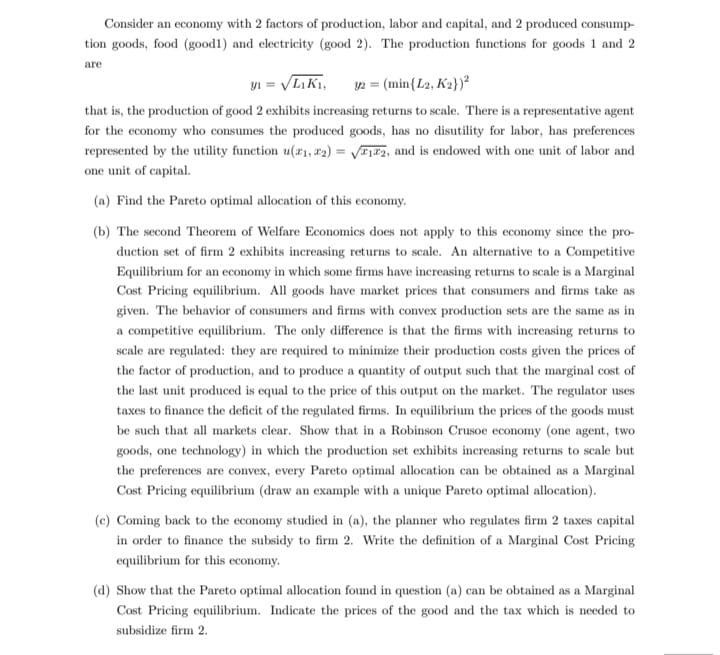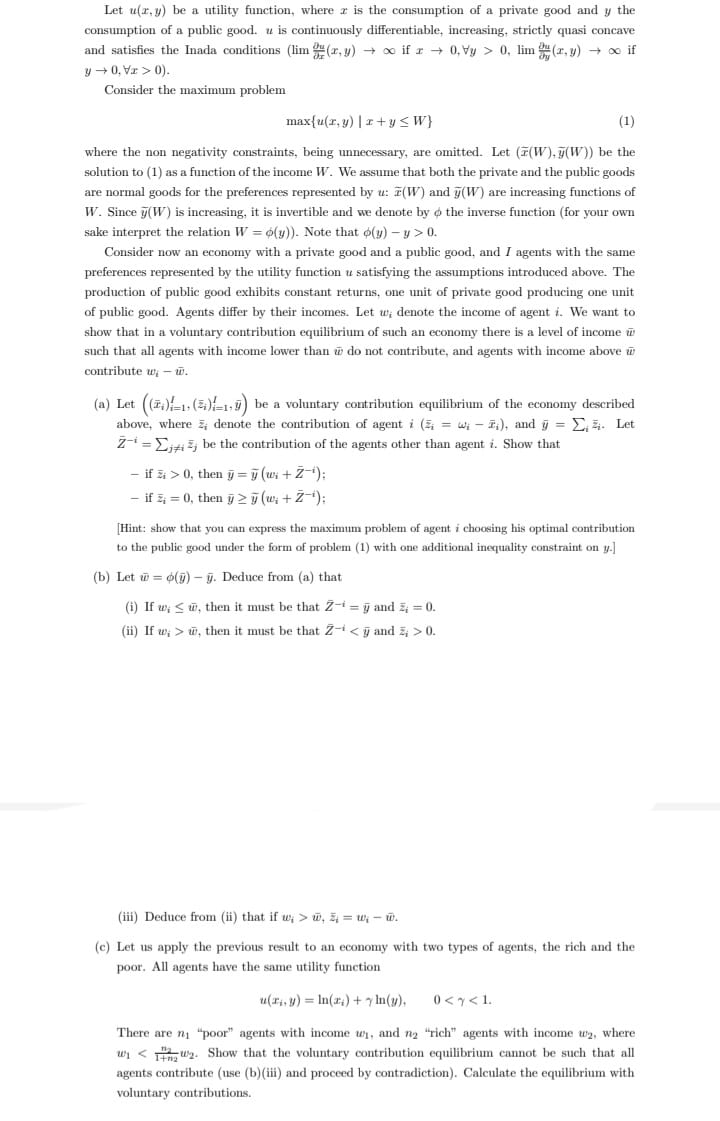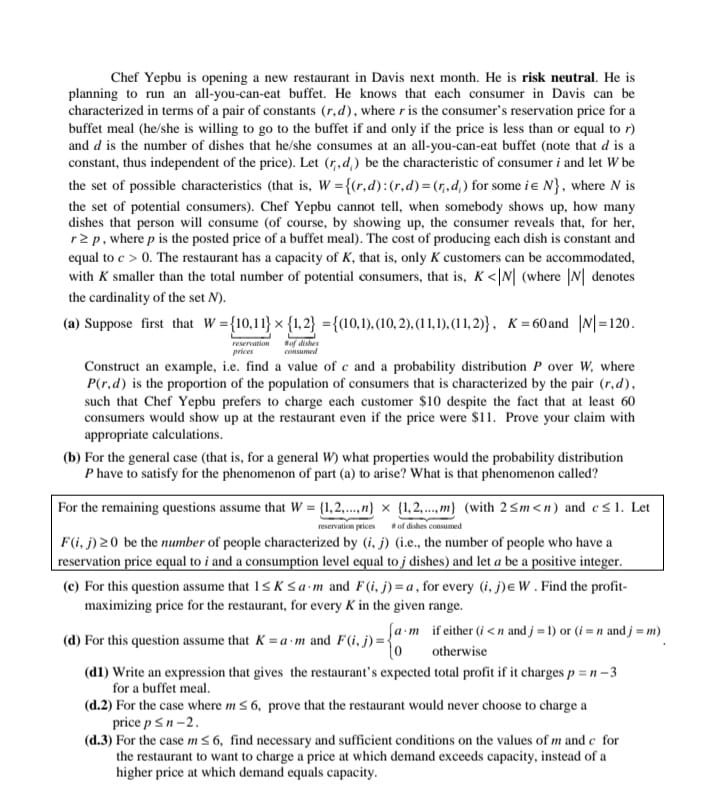


Question 1;
Consider an economy with 2 factors of production, labor and capital, and 2 produced consump- tion goods, food (good1) and electricity (good 2). The production functions for goods 1 and 2 are Vi = VLIKI, In = (min ( La, Ka]) that is, the production of good 2 exhibits increasing returns to scale. There is a representative agent for the economy who consumes the produced goods, has no disutility for labor, has preferences represented by the utility function u(21, 12) = \\71:32, and is endowed with one unit of labor and one unit of capital. (a) Find the Pareto optimal allocation of this economy. (b) The second Theorem of Welfare Economics does not apply to this economy since the pro- duction set of firm 2 exhibits increasing returns to scale. An alternative to a Competitive Equilibrium for an economy in which some firms have increasing returns to scale is a Marginal Cost Pricing equilibrium. All goods have market prices that consumers and firms take as given. The behavior of consumers and firms with convex production sets are the same as in a competitive equilibrium. The only difference is that the firms with increasing returns to scale are regulated: they are required to minimize their production costs given the prices of the factor of production, and to produce a quantity of output such that the marginal cost of the last unit produced is equal to the price of this output on the market. The regulator uses taxes to finance the deficit of the regulated firms. In equilibrium the prices of the goods must be such that all markets clear. Show that in a Robinson Crusoe economy (one agent, two goods, one technology) in which the production set exhibits increasing returns to scale but the preferences are convex, every Pareto optimal allocation can be obtained as a Marginal Cost Pricing equilibrium (draw an example with a unique Pareto optimal allocation). (c) Coming back to the economy studied in (a), the planner who regulates firm 2 taxes capital in order to finance the subsidy to firm 2. Write the definition of a Marginal Cost Pricing equilibrium for this economy. (d) Show that the Pareto optimal allocation found in question (a) can be obtained as a Marginal Cost Pricing equilibrium. Indicate the prices of the good and the tax which is needed to subsidize firm 2.Let u(x,y) be a utility function, where a is the consumption of a private good and y the consumption of a public good. u is continuously differentiable, increasing, strictly quasi concave and satisfies the Inada conditions (lim (r, y) -+ co if x -+ 0, Vy > 0, lim , (r,y) -+ co if (0 0. Consider now an economy with a private good and a public good, and I agents with the same preferences represented by the utility function u satisfying the assumptions introduced above. The production of public good exhibits constant returns, one unit of private good producing one unit of public good. Agents differ by their incomes. Let us; denote the income of agent i. We want to show that in a voluntary contribution equilibrium of such an economy there is a level of income w such that all agents with income lower than w do not contribute, and agents with income above contribute wi - w. (a) Let ((2.)/=1. (2)/=1,9) be a voluntary contribution equilibrium of the economy described above, where 2, denote the contribution of agent i (? = w; - z,), and y = ), 4. Let Z- = _jy, be the contribution of the agents other than agent i. Show that - if = > 0, then y = y (wi + z ): - if , = 0, then y 2 y (w + 2-'): [Hint: show that you can express the maximum problem of agent i choosing his optimal contribution to the public good under the form of problem (1) with one additional inequality constraint on y.] (b) Let w = (y) - y. Deduce from (a) that (i) If we S w, then it must be that Z- = y and = = 0. (ii) If w, > w, then it must be that Z- 0. (iii) Deduce from (ii) that if uy > , 3 = w, - w. (c) Let us apply the previous result to an economy with two types of agents, the rich and the poor. All agents have the same utility function "(ry) = In(z.) + yin(y), 0 0. The restaurant has a capacity of K, that is, only A customers can be accommodated, with A smaller than the total number of potential consumers, that is. K












